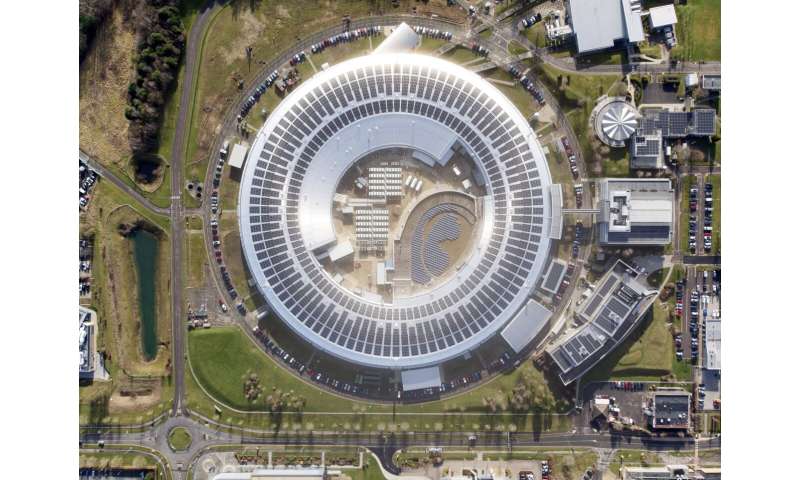The big switch on: solar panels at UK's national synchrotron, Diamond to save over £500,000

The UK's national synchrotron facility has introduced a renewable energy solution, emphasising sustainability and cost-effectiveness. By adopting greener practices, the facility is projected to save over half a million pounds
Recently installed solar panels that cover the entire roof of Diamond Light Source are now fully operational. Diamond's roof covers an area of 32,000m2 which offers an exceptional opportunity to maximise energy efficiency through these panels.
The energy generated by the solar panels is an annual supply of 2.3GWh/y. This output amounts to around 5% of the facility's total annual energy consumption and will mean yearly savings of some half a million pounds. This will additionally contribute to energy savings of more than £2M per year.
The installation was part of a larger roof maintenance project which presented the opportunity to install a 2.7MW solar panel array.
The installation of the panels is part of Diamond's continued commitment to improving its performance and minimising the synchrotron's environmental footprint.
Since Diamond's construction in 2005, the organisation has enhanced the efficiency of existing equipment and limited the amount of equipment needed to run without affecting machine operation. These steps are central to Diamond's prioritisation of sustainability in all areas of the construction and operation of the facility. Areas of focus have been waste reduction, use of low-carbon electricity supply where possible and the introduction of photovoltaic panels.
The facility has also made additional significant advances in energy efficiency, with implementations ranging from motion sensors on lighting and LED-based light bulbs to variable speed drives on pumping equipment. These initiatives have achieved ongoing electricity savings of over £2 million a year.
Diamond fully endorses the Government's ambition to achieving net zero emissions by 2050, which is aligned with the Paris Agreement, to address climate change effectively.
As well as operating in a sustainable way, Diamond's scientists and users greatly contribute to global research and technological development in energy efficiency.

Gianluigi Botton, CEO of Diamond Light Source, said, "The completed solar panel installation demonstrates our commitment to lowering the carbon footprint of our world-changing science. This is significant in the high-tech, specialised research and development sector that Diamond operates in. The Government's Net Zero ambition will require substantial additional investment, but we are working to develop an achievable roadmap for this. Installing solar panels is one of the many steps needed and will not only provide considerable monetary savings, but also emphasises our aim to move towards more sustainable operations."
ENDS
For more information please contact Diamond Communications:
Lorna Campbell +44 7836 625999 or Isabelle Boscaro-Clarke +44 1235 778130
Diamond Light Source: www.diamond.ac.uk Twitter: @DiamondLightSou
Further information
Diamond Light Source provides industrial and academic user communities with access to state-of-the-art analytical tools to enable world-changing science. Shaped like a huge ring, it works like a giant microscope, accelerating electrons to near light speeds, to produce a light 10 billion times brighter than the sun, which is then directed off into 34 laboratories known as 'beamlines'. In addition to these, Diamond offers access to several integrated laboratories including the world-class Electron Bio-imaging Centre (eBIC) and the Electron Physical Science Imaging Centre (ePSIC).
Diamond serves as an agent of change, addressing 21st century challenges such as disease, clean energy, food security and more. Since operations started, more than 16,000 researchers from both academia and industry have used Diamond to conduct experiments, with the support of approximately 760 world-class staff. Almost 12,000 scientific articles have been published by our users and scientists.
Funded by the UK Government through the Science and Technology Facilities Council (STFC), and by the Wellcome, Diamond is one of the most advanced scientific facilities in the world, and its pioneering capabilities are helping to keep the UK at the forefront of scientific research.
Diamond was set-up as an independent not for profit company through a joint venture, between the UKRI's Science and Technology Facilities Council and one of the world's largest biomedical charities, the Wellcome Trust—each respectively owning 86% and 14% of the shareholding.
Provided by Diamond Light Source